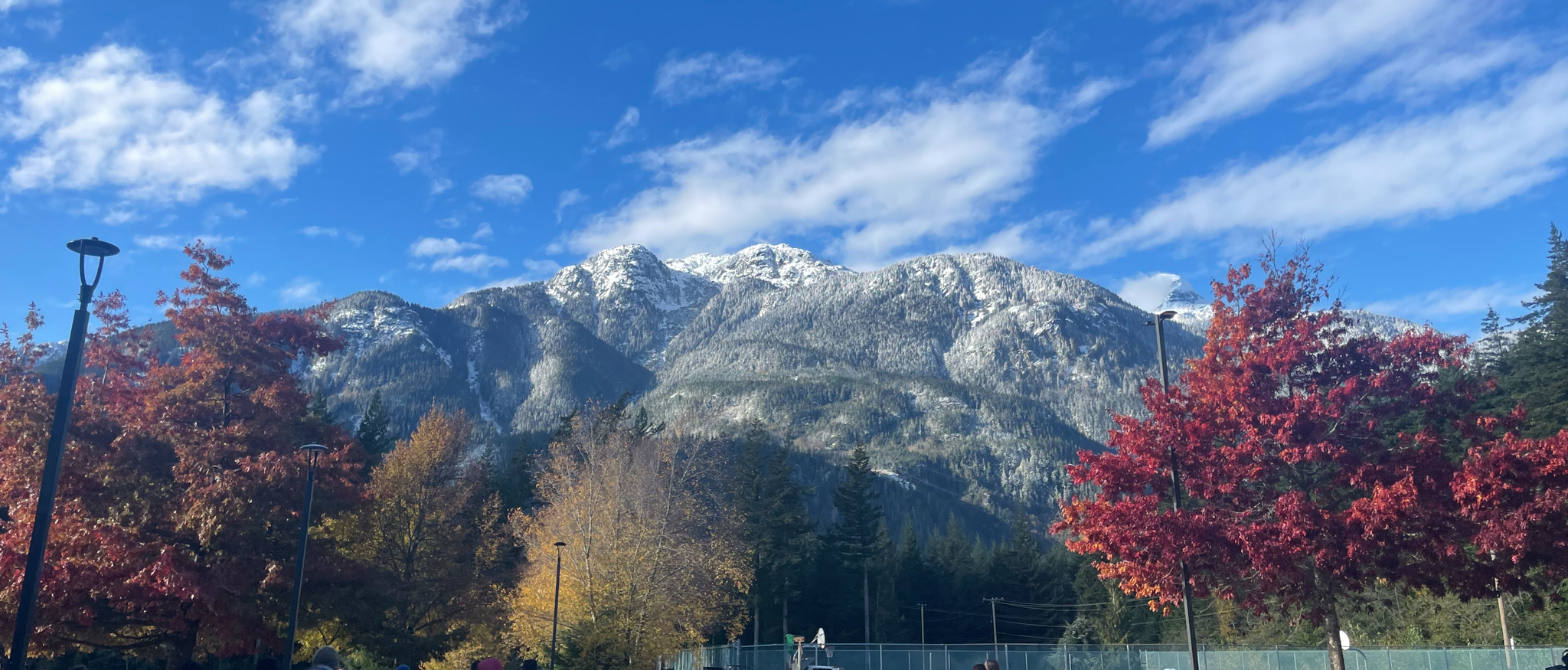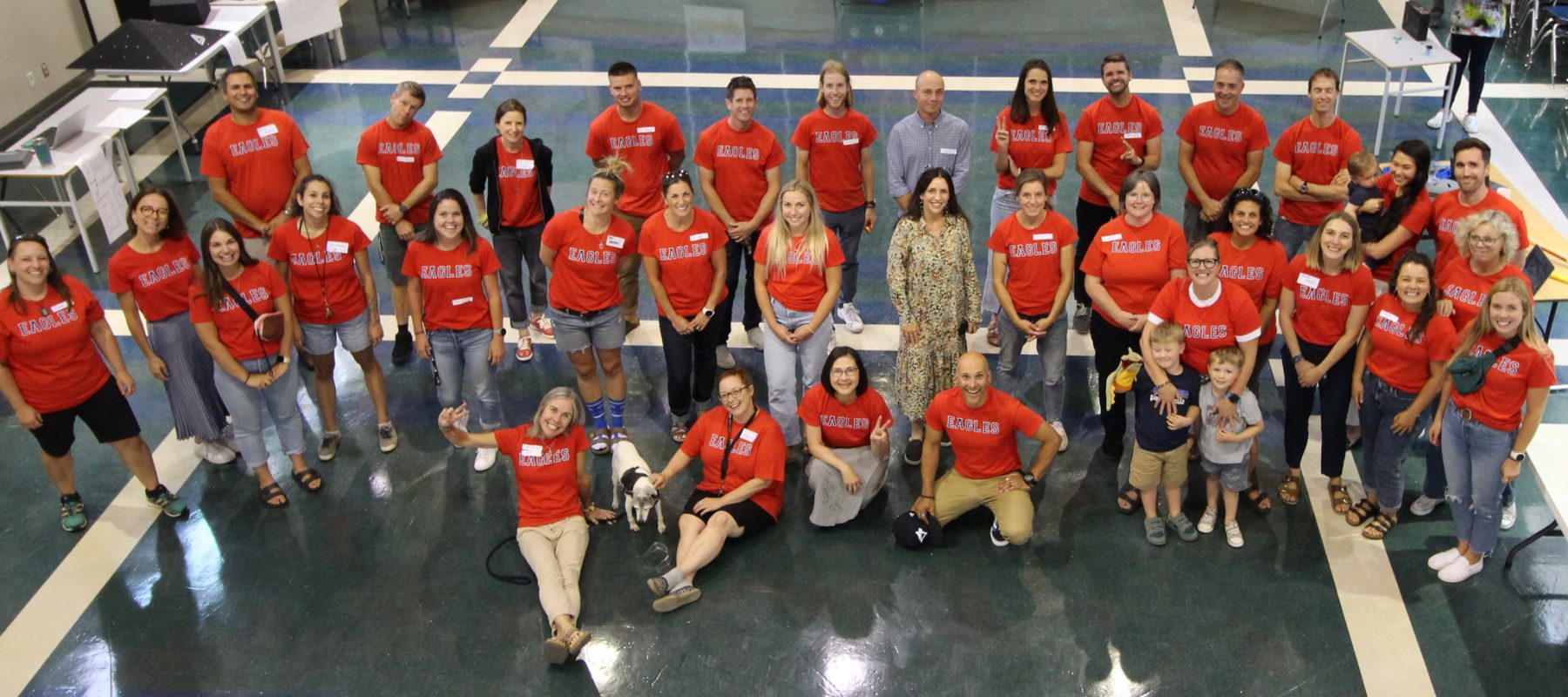
Transformative Educational Leadership Journal | ISSUE Spring 2023
What happens when a school gives students cameras and an invitation to tell stories of the places they feel safe at school? Join Jenelle Kresak in this appreciative inquiry into the relationship between students and the stories of place.
By Jenelle Kresak
After a decade of teaching in Asia’s mega cities of 15 million, I repatriated to a small town of less than 20 thousand in British Columbia to accept the role of school Vice Principal sight unseen. Upon arrival, my family immediately noticed that we had traded high rises, diverse cultures, and occasional unpleasant smog for a plethora of greenery and glacial lakes, a nature based lifestyle, and clean mountain air. Eager to capture this moment, we kicked off our move with a family portrait session.
To my surprise, when I told the photographer I would start working at the middle school, she did not hold back her negative commentary. This would be my first of many encounters over the next 5 years as a leader in the school. Upon reflecting on my experience and the learning I’ve done in the Transformative Educational Leadership Program, I’ve pinpointed that a change in narrative needs to occur. No institution or one person can reinvent the education system on their own.
We must ask ourselves, what is it we want for our children in this community? Only once we agree on this can we work together and know what our respective roles are (Brookings Institute Family Playbook, 2021).
This will require a more holistic approach, where families, school, and community will seek to address the emotional, physical, social, ethical, and academic needs of each student as our way forward.
When it comes to changing a narrative, we need to go beyond a surface approach of publicity, swag, and a spokesperson who sets the record straight. Although these quick wins support the change, real shifts come from small and incremental steps, a million little positives, relentlessly over time. I have come to agree that a community engagement process is not intended to serve individuals but to gain partnerships (Brookings Institute Family Playbook, 2021). A shift in beliefs and values that guide a system will drive changes across visible elements like those listed above and invisible elements such as connection, belonging and feelings about our school.
The idea is to develop enough supporters that the old voices are dimmed by stories about acceptance, support, and compassion for students. In addition to system change, this work requires a dedicated team of educators, passionate about providing wrap-around support to all students so they feel seen, heard, and valued. In the next section, I will outline the system change we have gone through as a school detailing our scanning process and next steps.
The Change
This middle school has undergone significant changes in the past 5-10 years. Originally an 8-10 junior secondary school, now a 7-9 middle school with potential to move to a 6-8 middle school. When I started in this school district in 2018, it was still a block based secondary system where students were getting lost or forgotten. The high number of students who came to school every day but did not attend classes was alarming.
Understanding that the system was operating exactly as it had been designed, we knew it had to change. Rather than punitive measures like sending students home or to an alternative school, we created systems and programs for them within our building. COVID provided the perfect opportunity. We leaned into Indigenous Ways of Knowing, Being and Doing while planning our new structure.
We recognized the importance of relationships and moved the entire school to a teacher team cohort model where two teachers share a group of 52 students, two homerooms, and design learning opportunities together that can be flexible and responsive, without a fixed block rotation system. Now three years into this model, we are seeing that every student has a connection to their classroom and their homeroom teacher is their advocate.
The human connections this system has created have inevitably made students feel seen and heard and have decreased incidents of violence and exclusions from learning.
On-going Scanning
What is going on for our learners? How do we know? Why does it matter?
Since I am focusing my attention on narrative within the school with students and staff and outside the school in the community, I will refer to our learners in two different ways – our school learners and our community learners.
What is going on for our learners? How do we know? Why does it matter?
-
- Our community learners are worried about middle years learners. We know because they talk about it in social circles and on social media. It matters because it shows us they care about the youth in the community.
- Our community is rapidly changing and growing. We know this because we see the population and cost of living skyrocketing. It matters because it is changing the socioeconomic status of our communities and changing who we serve.
- Education has changed to be more inclusive than ever before, which can be fearful for people who do not understand. We know this because the community expresses concerns over how situations are being dealt with at the school level. It matters because we have a moral imperative to provide an education to every student and we need our families to empathize with each other.
- Our community is grappling with Truth and Reconciliation and trauma around education. People are starting to come forward, bravely, and speak up for their children. We know this because communities are creating new education systems for their Nation and because they are no longer silent in conversations about their kids. It matters because this has not always been a reality for some marginalized communities and they deserve dignity and respect within our education system.
Focusing and Developing a Hunch
Valerie Hannon and Anthony MacKay argue in “The Future of Educational Leadership: Five Signposts” that “without an explicit communicative narrative, there is a tendency for the status quo to prevail.” This idea struck me as particularly true. Hannon and MacKay characterize real change as hinging on the move away from individual needs, wants, and successes, towards an understanding that education is a societal responsibility.
In “Transforming Education for Holistic Development” Datnow et al. (2022) reinforce this idea by asking, “What would it mean – and what would it take – to build education systems that develop every child as would that child’s own parents?” The intersection of these two big ideas from Hannon and MacKay and Datnow energizes me to engage in deep conversations with our school and community. It strikes me that these concepts are missing from our community’s conversation about our school and the youth we serve.
In an effort to shift public narrative, we seek to bring our school into the community in new ways. We hear that students and families in our feeder elementary schools are anxious about their transition. Rather than waiting for them to come to us and navigate challenges as they arise, we are piloting a new, more holistic approach to our Grade 6 to 7 transition.
In the past, Grade 6 students would tour our school once, in a large group with multiple schools, sometimes with tour guides that were trying to be helpful (by sharing the bathrooms not to go in, or hallways to avoid) but were unknowingly adding more fear. Furthermore, elementary school staff would attend a single meeting with a few staff members to share stories of their most challenging students. Although this information may be necessary, it enforces deficit thinking of students rather than encouraging holistic and purposeful conversations. This year, we have adjusted our transition plan to include:
-
- Visiting elementary schools during class time to interact with students in their comfortable learning environments with people they trust. We will visit each school for an hour and a half while school is in session, answering questions, and getting to know the students. After the visit, we will meet with learning support staff, administrators, and classroom teachers. This is when we hope to hear anecdotal stories and positive strategies for every student.
- Touring Elementary students around our school in smaller groups. Each school will come on a different day, creating less of a show and more of an intimate experience. We will have a staff member and an older student who attended that elementary school lead the tour, focusing on positive spaces and people.
- Coordinating additional individual or small group tours for students and families who need more time at our school. During this time we will focus on connecting these students to people who will be supporting them during their time at our school (counsellors, education assistants, learning support teachers, etc).
- Adding an open house before the end of the school year to welcome Grade 6 families to our building. Here they can meet staff, share food and conversation, see the building, participate in a fun activity, and relieve stress and worries.
- Dedicating the first week of school to welcoming our grade 7’s by taking them to an offsite outdoor education experience to build connections and belonging with one another and our staff. During this time we will also be making last minute adjustments to class lists to ensure best fit placement for all students.
Although this new strategy will take a lot of extra time, people, and financial resources, we feel it is an essential step to changing the narrative of our school and providing a holistic experience for our families. Creating student belonging does not happen overnight or over the course of a summer vacation between grade 6 and 7. The hope is that these additional touchpoints will expel myths and shine a more positive light on our school.
Once we try this new system of welcoming our incoming students this spring, my intention will be to collect data on how this has impacted our Grade 7 students entering our school. Typically, teaching routine and norming behaviour expectations for our Grade 7’s can take until Christmas. My hunch is that if we create additional layers of support within our system during the transition, then we will see a sense of belonging and more prosocial behaviours earlier in the year.
In addition to our transitioning grade 7 students, we are focusing a greater effort in transitioning our grade 9’s to high school. We know that as students mature and become young adults, they can look back at their time in middle school with embarrassment and distaste for these developmental years.
Rather than asking if our students are ready for high school, we are shifting the narrative to how we can prepare the high school for our students. We do this by:
-
- Dedicating transition meetings with both schools’ School Based Team. Focusing on strength based strategies rather than stories of times when they struggled.
- Having small group timetable sessions with the high school counselors and leaders in their homeroom classroom with safe and caring adults present to help.
- Having every student with an IEP meet with their case manager in the spring to design a “perfect timetable” and advocating for each of them to be manually entered rather than being spun into the timetable machine.
- Advocating for our most vulnerable students to start attending high school classes periodically or to work in high school common spaces after spring break to ease their transition and start connecting with their new “people” at the high school.
- Dedicating a Collaborative Support Teacher to work both at the middle and high school to connect with students and help with the transition for the next school year.
Taking Inventory – Current Reality and Listening
Student Data Collection
Despite studying the handful of data sets that show improvements in measures of student safety and belonging over the restructuring of our middle school, we are also feeling stuck. In an attempt to explore these feelings, we’ve developed a student focus group. Similar to the Walls and Louis study on the politics of belonging, we hand selected a group of students from a diverse subset to ensure we were hearing all perspectives, ensuring every grade level, gender, Indigenous ancestry, and levels of academic and popularity were represented. With a focus on safety and belonging, we prompted students to engage in an autophotographic project of their school by documenting places at school where they feel:
-
- Safe.
- They belong.
- They learn best.
- Uncomfortable.
Some of the initial areas we would like to learn more about are our bathrooms, stairwells, and alternate learning spaces. The bathrooms and stairwells are especially polarizing, a safe haven for some, a nightmare for others. Classrooms, on the other hand, were viewed by students in a more consistently positive light. Alternate learning hubs such as our learning services, counseling, and collaborative learning rooms were seen as safe and preferable. Similar to Walls and Louise, it seems that spaces with a certain lower level of supervision or surveillance are seen as safer than places where students are left to their own devices, or as the authors describe it, ‘the wild’.
By asking questions to students and collecting street data (Safir, 2020), we are making an effort to walk into difficult conversations and face the challenges. By spending more time with students discussing feelings of safety and belonging, we are working to invite input and listening to students’ reality.
By initiating authentic conversations that get to the root of their concerns, we see value in both finding common ground and ensuring students feel heard.
One challenge with Middle Schools generally is the manner in which students and parents are faced with the reality of a profound, often uprooting, transition for two of the three years. In my experience, transience breeds tension and makes it harder to live in the moment. A more inclusive, holistic, and intentional approach to the merging of the elementary, middle, and high school worlds would soften the edges for what can be a jarring experience and lingering period on the front-end and back-end of middle school. In short, the more seamless the transition, the more students will view the three years as a time to thrive, not just survive.

Datnow, A., Park, V., Peurach, D., & Spillane, J. (September 2022). Transforming education for holistic development: Learning from education system (re)building around the world. Center for Universal Education at Brookings.
Dugan J. & Safir S. (2022). Street Data: A Next Generation Model for Equity, Pedagogy, and School Transformation.
Halbert, J. & Kaser, L. (2022). Leading through spirals of inquiry for equity and quality. Portage & Main Press. Hannon, V. & Mackay, A. (August 2021). The future of educational leadership: Five signposts. CSE Leading Education Series #4 Centre for Strategic Education.
Collaborating to Transform and Improve Education Systems – a playbook for family engagement. (2021) Brookings Institution Publication. Pp. 6-70

